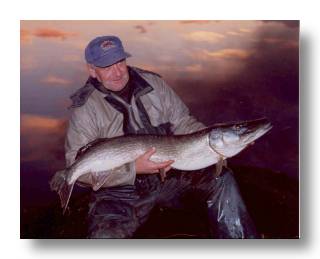| It came to me by accident one miserable winter’s day, as I tried in vain tolob my baits across a flooded river into the mouth of a far bank boatyard.Every other time I heaved the rig skywards, the bomb slid back up the lineas it flew towards its target. By the time it landed, weight and bait werefive or six feet apart, so by the time I’d tightened down properly and setthe drop-off indicator, I’d actually pulled the bait out of the area Iwanted to fish and into the main flow, where I knew I couldn’t even catch acold. In desperation, I bit the trace off and threaded a rig stop and bead back upthe line, before replacing the lead and business end. Sliding the stop downto within 6 inches or so of the trace swivel stopped bomb and bait fromseparating on the cast, meaning all I had to do was tighten up a few turnsto set the indicators and I was fishing where I wanted – without draggingthe bait yards away from that inviting little slack. I know what you’re thinking. What if they feel the lead and drop it as soonas that rig stop hits the weight. Weighing it up, I didn’t have a lot ofchoice. Get one cast in four or five in the right place and risk losingbaits and scaring the pike further into the boatyard out of casting rangewith the repeated disturbance of lead and bait smacking into the water, orget it in the right place first time and bank on hitting any takes beforethe fish smelt a rat and dropped the bait.
I had three fish to 12lbs or so that afternoon. All of them came from themouth of that boatyard and they all screamed off at a rate of knots as soonas they took the bait. All three were hooked in the scissors by the bottomhook on the trace as well, so by the time I slung the gear in the car todrive home, I was starting to wonder whether I was onto something. Carp anglers have been using fixed and semi-fixed bolt rigs for years, ofcourse. Despite numerous permutations of hook length and end rig, the basicprinciple remains the same – when the fish takes the bait, the suddenresistance caused by the lead drives the hook in. If it worked with carp, which are arguably a much more sophisticated fish,why shouldn’t it work with pike, I wondered. Over the last few weeks of theseason I began experimenting with backstops, setting them at differentdistances behind free running leads. Over the course of several sessions, Ihardly missed a single take. And instead of the hesitantstop-go-is-it-on-or-isn’t-it takes usually associated with end of seasonfish, they were all full-blooded runs. The backstop and heavy lead approach has another advantage. Set correctly,I’m convinced it can help you avoid deep hooking. Here’s why. Ever wonderedwhy a pike runs with the bait..? It’s simple – as anyone who’s ever watchedone pick up a discarded deadbait in the margins can tell you. The pikealmost always grabs a bait across the middle and as it moves off, it flaresits gills and uses the rush of water through its mouth and gill slits tohelp drive the bait into its throat. Unless you’re using a tiny bait, or it’s a very big pike, it has to movewith the bait to begin swallowing it. The trouble with letting runs developon bottom-fished baits is you can rarely gauge how big the pike which hastaken your bait is. A three or four pound jack might have to swim a fewyards or more to swallow the bait and hooks down. A double figure fish orbetter can swallow even a big bait down in much less. With the bolt rig, the fish pricks itself on one or the other of your hooksas soon as it starts to move. Feeling the resistance or the hooks, it panicsand bolts; hooking itself in the process. I’ve yet to deep-hook a pike bolt rigging. I’ll admit I’ve lost a few, wherethe hooks have pulled out on the way in – presumably because they’ve lodgedin the skin on the very edge of the mouth or even caught round a tooth,rather than penetrating a more secure spot. I’ve also missed takes from timeto time, but you do on any rig. The bolt rig is nothing special, usually just a 2oz bomb attached with asnap link bead, with a couple of soft beads above the trace swivel and a rigstop and another bead six inches to a foot back up the line. Before you dismiss this out of hand as another load of nonsense from one ofthose Norfolk nutters, consider this. How resistance-free are thoseso-called low res run rings and beads..? Once you’ve got 20 or 30 yards ofline bowed out across a drain or river, the pike still has to move all thatto trigger your bite indicator. Bombs and rings sink into silt or bottom debris. Even those stems, withlittle polyballs on the top, are a bit misleading. They sit up, so themakers’ blurb goes, allowing the line free passage. Oh really..? Whathappens when you tighten up..? That’s right, it keels over and lies flat tothe bottom like any other bomb, bead, link etc. Few rigs are truly resistance free. You need a weight of some sort to anchoryour bait and provide something to tighten indicators down to, in order toavoid deep hooking. Instead of making vain attempts to eliminate resistance,why not use it to our advantage to create a self-hooking rig which reducesthe chances of a fish swallowing the bait down..? |
Welcome!Log into your account











